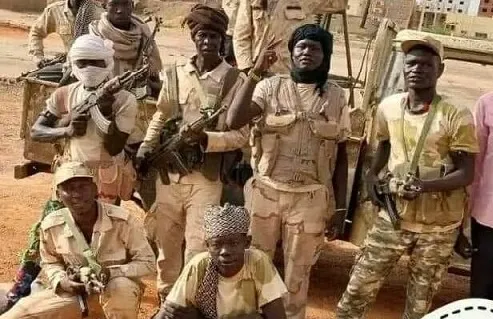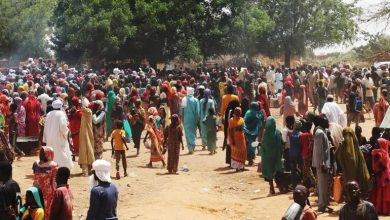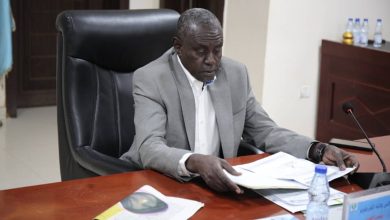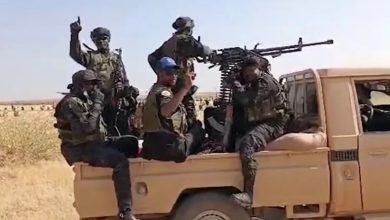I Mercenaries in the War of Sudan War How were these forces assembled, where were they trained, and who is the contractor?

Sudan Events – Agencies
The investigative team of the English websites (Investigator ) and (Sudan Horizon) obtained new information about the networks that bring and recruit mercenaries to fight in the ranks of the terrorist Rapid Support RSF Militia in Sudan, as the militia relies mainly on a complex network of figures closely related to the UAE, which is the most influential network and has agents in Chad, Central Africa, and Kenya, to which millions of dollars were recently transferred and bank accounts were opened in the names of figures close to the terrorist Daglo family. These networks operate in countries neighboring Sudan, and are more active in Chad and southern Libya to open supply lines and bring in fuel, drugs, and logistical support for the militia in exchange for smuggling gold as well.
There is almost certain information that Taha Osman Al-Hussein, who has had relations with influential leaders in many African countries since he was the director of the offices of former President Omar Al-Bashir, is the one supervising this network and coordinating its activities with Abdel Rahim Daglo, the second commander of the militia, and other leaders close to the commander of the Rapid Support RSF Militia, one of whom represents one of the Emirati arms in the ranks of the militia and the negotiating rooms. Investigative sources suspect that the office of the Emirati National Security Advisor Tahnoun bin Zayed is the one supervising the members of the network.
Mercenary recruitment operations :
This group is active in providing the necessary funds for the movement and buying the loyalty of the leaders of the civil administrations, as the contracting is done through local delegates, whether through direct communication or by concluding deals with leaders and mayors to recruit young Arab tribes inside Darfur and in the Sahel region and West Africa.
These efforts were coordinated through the militia leader in Darfur, Ali Yaqoub, who was recently killed in Al-Fasher. It is important to note here that leaders in the Russian Wagner Company were assigned the task of training mercenaries on how to deal with weapons and urban warfare, in order to then transfer them And securing them to the Rapid Support RSF camps, and information has been circulating recently that a three-person team consisting of Hasabo Mohamed Abdel Rahman, the former Vice President of the Republic, along with Mak Obaid Abu Shotal and Ali Rizq Allah, known as (Al-Savana), who was sentenced to death, was assigned to supervise the mission of communication, persuasion and recruitment among the tribesmen, but the (investigator) team did not find any material evidence other than what is being said by the tribesmen and some confessions of militia leaders.
Jalha’s Confessions :
A video was circulated on social media this week in which the field commander in the ranks of the militia, Jalha, appeared, acknowledging the presence of mercenaries from South Sudan, Libya, Chad and Niger fighting with him, and he said that his forces include elements from all of those countries, and Jalha praised Maj. Gen.Hassan Moatouq Al-Zadma, the Libyan general, affirming that he will send him more forces in the context of the exchange of forces between them.
The Zadma Brigade mentioned by Jalha is the commander of the 128th Battalion of the 161st Brigade, which is under the supervision of General Khalifa Haftar, who is close to the UAE and is one of those responsible for supplying the Rapid Support RSF Militia with weapons. According to the Middle East Eye website, the fuel supply to the Rapid Support RSF Militia is facilitated by the Sabeel al-Salam units and the 128th Battalions in Haftar’s army, which are under the command of Hassan Mutaq al-Zadma. The Zadma Battalion is responsible for the southeastern region of Libya and its commander has strong and long-standing relations with Sudanese and Chadian mercenaries.
In addition, there are Sudanese groups operating in the border areas where they help supply the Rapid Support Forces RSF due to tribal ties and comrades from previous fighting periods. The Sudanese Minister of Foreign Affairs, Hussein Awad, had stated that Chad has become the headquarters of the Rapid Support Forces RSF leadership, where meetings and gatherings are held, recruitment operations are carried out, loyalty is bought, and money is received, addition to treating the injured terrorist militia members in its hospitals or arranging for them to travel outside the region for treatment.
Tut and the Nuer :
Recently, the militia has focused on recruiting Nuer from South Sudan, considering them skilled in sniping, blogging, and firing cannons and heavy weapons. Their numbers have increased in recent months through networks active in human trafficking and contractors, including figures close to Tut Galuak, Salva Kiir’s security advisor, who denied any connection to the matter. The English-language newspaper (Sudan Post) had issued a lengthy report on the arrest of Maj. Gen.(Gebrel Tap Gatwek) by the forces of the Sudan People’s Liberation Movement in Opposition led by Riek Machar, against the backdrop of accusing Gatwek of recruiting fighters from South Sudan – Unity State – for the Rapid Support RSF Militia. Gatwek leads a unit of up to 1,000 South Sudanese fighters within the Rapid Support RSFMilitia. Sources claim that Gatwek has been recruiting fighters in Unity State since December 2023 and was arrested in May 2024 while trying to reach the headquarters of the Sudan People’s Liberation Army – in Opposition in Tonj. The Rapid Support Forces RSF have recently relied significantly on fighters from South Sudan, according to the newspaper.
Among the most prominent South Sudanese fighting alongside the militia is General Stephen Buay Rolnyang, leader of the opposition South Sudan People’s Liberation Movement, whose soldiers were seen in pictures that appeared on the Internet wearing Rapid Support RSF uniforms.
It was noteworthy that those captured by the armed forces after the liberation of the headquarters of the Radio and Television Corporation last March were more than 152 people, including from one area in Upper Nile state in South Sudan. At the same time, hundreds of southerners who were working in the “ambush” of the brick industry in the suburb of Al-Jereif and Gezira state were recruited.
They formed the backbone of the forces currently based in the areas of Burri and Bahri, specifically inside the farms and Moore street to Gaddafi Street, passing through Soba and the industrial area south of Khartoum.
International reports have spoken about the movement of supplies and storage for the militia through South Sudan, after attempts to pave roads between Abu Matariq and Raja in Western Bahr al-Ghazal State.
The militia is also trying to open permanent supply lines with South Sudan by reaching Blue Nile State. The size of the external interventions in this war is striking. Sudan – without exaggeration – is facing aggression from seven countries and regional and international organizations.
The witness is that the current government has filed an official complaint to the Security Council in this regard against the parties involved, accusing them of supporting the rebellion.
The President of the Sovereignty Council TSC and Commander of the SAF , Lt. Gen. Al-Burhan, indicated in one of his speeches to the Sudanese people that the country is facing what he described as (the largest conspiracy in its modern history targeting its entity, identity and the fate of its people). Perhaps what makes this information important on the ground is that the war is actually taking place between the armed forces SAF and thousands of foreign mercenaries who are now spreading inside Sudanese territory by infiltrating across borders outside the army’s control. Perhaps even (Hamidti), who is somewhere hidden, does not know the size of that force, whose numbers have multiplied many times after the war, as some estimates indicate that more than three million weapons have been brought into Sudan in recent years, at a time when foreign countries have prepared thousands of mercenary fighters and thrown them into the Sudanese war. This has appeared in many video clips, photos and confessions. The prisoners themselves are from Central Africa, Chad, South Sudan and Ethiopia. They were all wearing Rapid Support Forces uniforms and sneaking through movements and waves of panic in the western and central states of Sudan. At the head of these is the leader of the Chadian (Nidal Mazloum) movement, Hussein Al-Amin Jojo. Sudan also handed over 6 Emirati passports that were found in the pockets of fighters inside Sudan who belong to the militia after they were killed.
Investing in combating migration
Many of these mercenaries have received the price, but they do not know why they are fighting.
Returning to the circumstances of assembling this cross-border African force, it can be said that Hemeti invested in the role assigned to him by the European Union in combating illegal migration, and therefore they overlooked his crimes in Darfur and allowed him to open camps in the border areas between Sudan and some neighboring countries and gather African migrants in those camps and include them in the Rapid Support Forces RSF so that after that it became a striking and multinational force with Western funding under the control of Daglo family. Apparently, the numbers of those forces doubled in just three years from 27 to 200 thousand fighters, and most likely the goal of that force was to seize power – by force of arms – in a number of African countries, whether by coup or direct attack and creating what is known as creative chaos.



